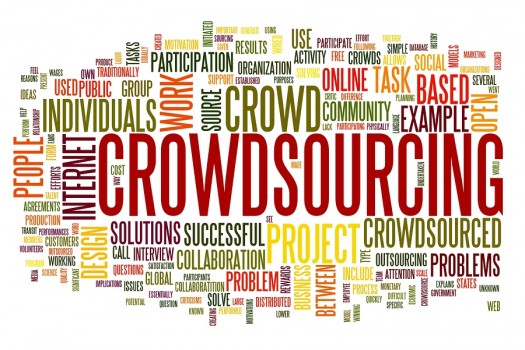How to Tap Into the Power of Internal Crowdsourcing
June 2, 2016

Quick and nimble isn’t just for the small and lean. Today, organizations of all sizes are looking for ways to become more efficient, find new products to sell, and conquer emerging markets.
But much like love, you can’t buy innovation or agility.
Investing millions of dollars in management and process re-engineering consultants, innovation centers, and acquisitions is the typical approach, but what many leaders fail to realize is they already have a key asset necessary to become more innovative and agile: their own people.
Tapping Into Your Most Valuable Resource
Companies such as Coca-Cola, General Mills, and Doritos have successfully utilized external crowdsourcing to develop more effective ways to advertise and develop products, but very few take full advantage of their employees’ collective wisdom.
That is changing. To evolve their processes and cultures to respond to ever-changing market dynamics, large companies must undergo a paradigm shift. Internal crowdsourcing is becoming the best way for organizations to leverage the untapped knowledge and experience of employees to find creative solutions, refine business strategies, make predictions, and increase efficiency. Companies like Ford, Google, and even the U.S. government are already starting to reap the benefits.
Let’s say your organization is entering a new market in an attempt to increase revenue. In order to meet your goals, you need to understand what the risks and their impacts are as well as how your competition will react, what pricing should be, and what your best marketing strategy is.
Traditionally, your senior executives have defined and evaluated the company’s strategies, but they’re not always in the best position to see which parts aren’t working. On the other hand, your employees are in a much more effective position to not only give judgments but also to offer creative solutions to the problems that are sure to arise. After all, they’re on the ground floor and can see the glitches in execution firsthand. By asking your employees for their input, your large organization will gain:
• Transparency: Internal crowdsourcing connects the visions of the leadership team with the day-to-day experiences of the employees, allowing an organization to be more adaptive.
• Awareness: Internal crowdsourcing allows a big company to be more aware of internal and external trends — not to mention their implications for employees and the organization as a whole.
• Agility: Businesses must be flexible and be able to react to changes in the marketplace, but often, they’re too brittle to react in time. Internal crowdsourcing encourages larger organizations to experiment and course-correct when needed.
• Foresight: Internal crowdsourcing empowers organizations and their leaders to link past trends to future predictions and think on the offensive.
It is crucial for large organizations to set themselves up for successful crowdsourcing from the beginning. Here are five tips to get you started.
1. Garner executive buy-in first. If your leadership team feels wishy-washy about this initiative, your employees will not only sense it — they will likely mirror those feelings, too. Your C-suite needs to start the conversation in a genuine way and react to the information that comes out of the process.
2. Promote crowdsourcing as a two-way street. Yes, your company will gather new insights and ideas, but it’s also important to advertise the benefits that individuals will experience. Internal crowdsourcing essentially gives your employees the chance to become part of the decision-making process and work on ideas they’re truly invested in.
3. Give your employees the power of anonymity. People are notoriously more open (and critical) when they can hide behind a mask of anonymity. Having the option for your people to participate anonymously will allow them to say what they think without fear of repercussion or judgment.
4. Link crowdsourcing to a broader initiative. If your internal crowdsourcing is tied to culture change or another initiative that already has buy-in, it will benefit from the existing support.
5. Don’t let the “chore mentality” spread. Crowdsourcing shouldn’t feel like yet another task that employees have to check off their lists. It should be framed as something critical to the success of the company and be part of how employees’ contributions are measured. When done correctly, it can allow employees to feel more invested in the companies they work for.
Internal crowdsourcing has the potential to start a positive movement that will ripple throughout your entire organization. It allows companies to maintain a competitive advantage, become more agile, find the next big thing, or just make iterative improvements. Perhaps most important, it encourages employees to be more involved and take ownership of the successes of the companies they work for.
Business & Finance Articles on Business 2 Community
(29)












